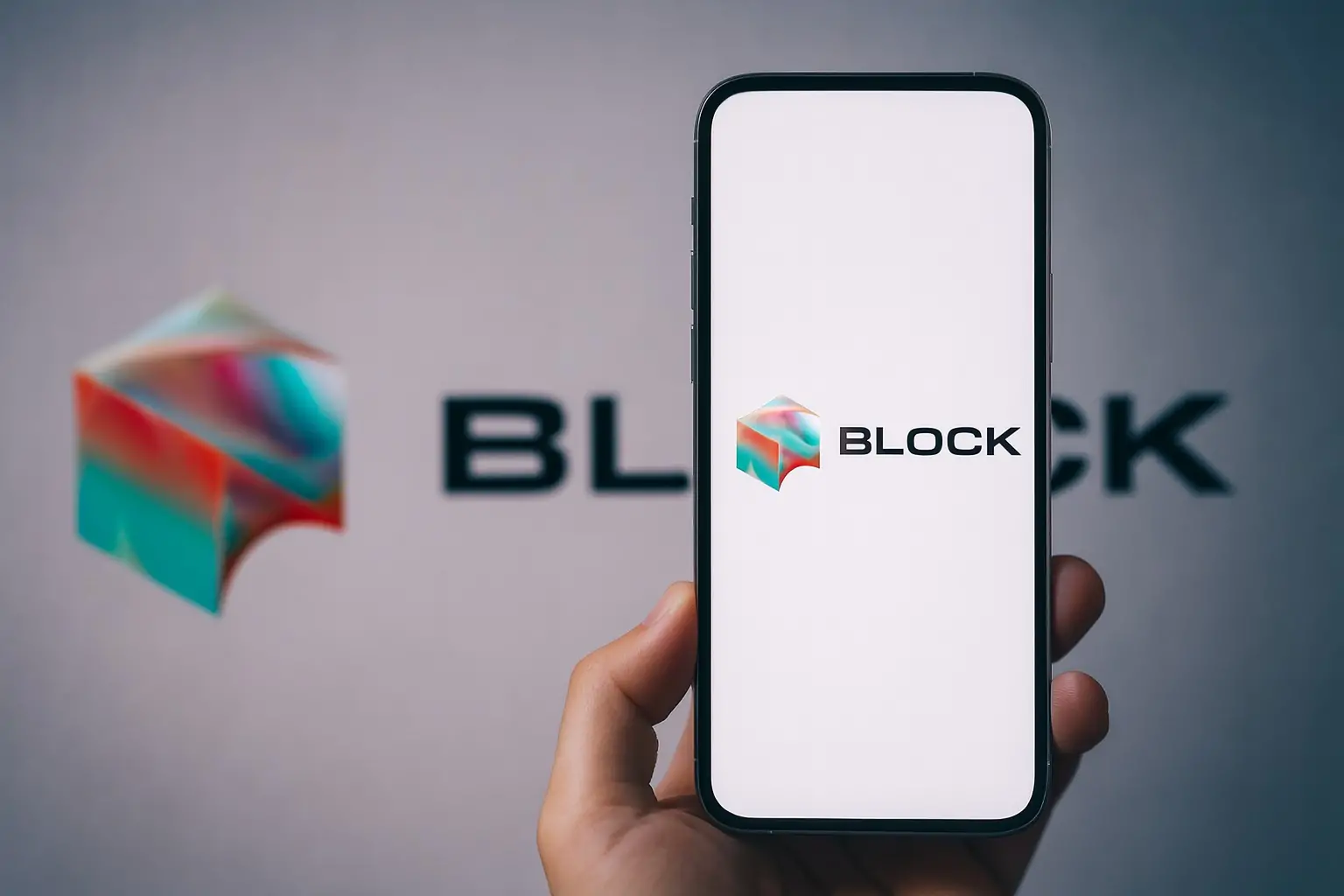Block, Inc. (NYSE: XYZ) — the Jack Dorsey‑led fintech behind Cash App and Square — is back in the spotlight today after unveiling an ambitious three‑year growth roadmap and a fresh $5 billion share repurchase authorization. The new plan, presented at the company’s 2025 Investor Day, has sent the stock up roughly 7–9% as investors reassess the beaten‑down fintech name. [1]
The strategy leans heavily on Block’s two core ecosystems, Cash App and Square, while doubling down on Bitcoin payments, stablecoins and AI‑driven credit and analytics tools. [2]
Key takeaways for Block, Inc. (XYZ) on 20 November 2025
- New 2028 targets: Block is aiming for $15.8 billion in gross profit by 2028, supported by mid‑teens annual growth. Management also targets about $4.6 billion in adjusted operating income and adjusted EPS of $5.50 by that year, implying more than 30% annual earnings growth from 2025. [3]
- Aggressive 2026 goals: For 2026, Block forecasts gross profit of nearly $12 billion, up 17% year over year, with adjusted operating income of $2.7 billion and EPS of $3.20. [4]
- $5 billion buyback expansion: The board approved an additional $5 billion share repurchase authorization, bringing total capacity to around $9 billion, a move widely read as a vote of confidence in the company’s long‑term valuation. [5]
- Focus on “Rule of 40”: Block now explicitly aims to exceed the “Rule of 40” (growth rate plus profit margin >40%) starting in 2026, framing its story as “profitable growth” rather than pure expansion. [6]
- Cash App Score pilot: A new “Cash App Score” credit metric is launching in pilot form, using near real‑time customer data instead of traditional bureau files, with a broader rollout expected in 2026. [7]
- Bitcoin & stablecoins go mainstream in Cash App: Cash App is enabling everyday Bitcoin payments via Lightning and adding stablecoin send/receive, alongside a map of participating merchants and other UX upgrades. [8]
- Q3 momentum underneath the headlines: In the third quarter of 2025, overall gross profit rose 18% to $2.66 billion, with Cash App gross profit up 24% and Square gross profit up 9%, underscoring the company’s growth engine even before the new targets. [9]
- Institutional interest ticks up: Filings show PNC Financial Services Group and Nicholas Wealth LLC have recently initiated positions in Block, while executive stock grants continue to vest, including a new RSU tranche scheduled around 20 November 2025. [10]
From fintech laggard to market mover — how the stock is reacting
Block’s new outlook comes after a rocky year for fintech stocks. Earlier this month, the company’s shares slid following third‑quarter results that missed some Wall Street estimates, prompting coverage that highlighted both a “dismal” sector backdrop and lingering doubts about Block’s execution. [11]
That narrative has shifted sharply in the last 24 hours:
- Coverage from multiple outlets notes a 7–9% jump in Block’s share price as markets absorb the Investor Day guidance and buyback announcement. [12]
- Some analysts and commentators argue that the combination of strong growth targets, large capital‑return plans and a still‑depressed valuation could mark a turning point for the stock’s longer‑term trajectory. [13]
For now, the market reaction suggests investors were looking for exactly what Block tried to deliver: a clearer path to sustainable profits, not just top‑line expansion.
Inside Block’s three‑year roadmap to 2028
Block’s official Investor Day materials and press releases sketch out a detailed — and notably bullish — financial trajectory. [14]
Gross profit and earnings targets
Block’s medium‑term plan centers on its gross profit and profitability profile:
- 2025: Management expects gross profit to be about $10.24 billion, up roughly 15% year over year. [15]
- 2026: Gross profit is projected to rise 17% to around $11.98 billion, with adjusted operating income of $2.7 billion and adjusted EPS of $3.20. [16]
- 2028: Block is targeting $15.8 billion in gross profit and $4.6 billion in adjusted operating income, while growing adjusted EPS more than 30% annually to about $5.50. [17]
A new non‑GAAP cash‑flow metric is also being introduced, which Block expects to reach around 25% of gross profit by 2028, or more than $4 billion. [18]
Importantly, these are management targets, not guarantees. Block’s own investor‑relations materials emphasize that they are forward‑looking statements subject to significant risks and uncertainties, echoing the standard SEC safe‑harbor language. [19]
Aiming for the “Rule of 40”
A recurring theme throughout the Investor Day is the “Rule of 40” — a metric often used in software and fintech to judge whether a company is balancing growth and profitability (revenue growth rate + profit margin ≥ 40%).
- Block now expects to exceed the Rule of 40 in 2026 and maintain that level through 2028, positioning itself as a more mature, profit‑focused business rather than a pure growth story. [20]
- The company frames this as a natural extension of the scale it has already achieved across Cash App, Square, Afterpay, TIDAL, Bitkey and Proto, which together are meant to form a tightly integrated financial and commerce ecosystem. [21]
Cash App: credit innovation, AI and everyday Bitcoin
If there’s a star of Block’s story right now, it’s Cash App.
Cash App Score: an alternative to traditional credit
Block has officially announced a “Cash App Score” pilot, a new type of consumer score designed to give customers insight into how their everyday financial behavior affects borrowing decisions. [22]
Key details from the company’s release:
- The score is built on near real‑time financial data — such as deposits, spending and repayments — rather than the static, backward‑looking reports used by traditional credit bureaus. [23]
- Selected customers can already access a Score tile inside Cash App, see what behaviors are helping or hurting their score, and view specific suggestions to improve it. As their habits change, the score updates dynamically. [24]
- Behind the scenes, Block says it is using its own AI tools to translate complex model outputs into human‑readable explanations and actionable tips. [25]
- The same credit models underpin Cash App Borrow, Afterpay and Square Loans, meaning Cash App Score could eventually inform lending decisions across the entire Block ecosystem once the broader rollout begins, currently slated for 2026. [26]
Block argues this approach can both expand access to credit and keep loss rates in check, pointing to its history of using live financial data to approve more loans at similar risk levels. [27]
Bitcoin Lightning, stablecoins and new consumer features
On the crypto side, Cash App is undergoing one of its biggest upgrades in years:
- A November Cash App press release and subsequent coverage confirm that the app is rolling out everyday Bitcoin payments using the Lightning Network, allowing users to spend their BTC at local businesses with lower fees and faster settlement. [28]
- Customers will also be able to send and receive stablecoins directly in Cash App, bridging fiat and crypto‑denominated balances. [29]
- A Bitcoin merchant map will help users find locations that accept Bitcoin, reflecting Block’s longstanding bet on BTC as a native internet money. [30]
At the same time, Block has quietly rolled out 11 product updates and more than 150 smaller improvements under the banner “Cash App Releases,” spanning everything from pooled payments (“Pools”) to enhanced savings and teen features. [31]
Taken together, Cash App is evolving from a simple P2P app into a full‑stack financial platform combining banking‑style features, credit, investing and crypto in a single interface.
Square, AI and the merchant engine behind Block
While Cash App often grabs the headlines, Square remains a crucial pillar of Block’s strategy.
According to remarks reported from the company’s recent earnings call and follow‑up coverage: [32]
- Cash App gross profit grew 24% year over year in Q3 2025, helping lift Block’s total gross profit to $2.66 billion, up 18%.
- Square’s gross profit rose 9%, with gross payment volume up 12%, driven by both U.S. and international expansion.
- In food and beverage — one of Block’s key target verticals — growth in gross payment volume accelerated to 17% in Q3 2025, with new volume added in that segment rising sharply compared with a year earlier.
Block is also weaving AI deeper into Square:
- The company describes Square AI as a toolkit that helps merchants explore their data, surface insights and, over time, receive proactive recommendations on how to grow sales or improve efficiency. [33]
- Management’s long‑term vision is for these tools to automate many operational decisions — from staffing and inventory to marketing — much like “autopilot” for small businesses. [34]
Some fintech commentary around Investor Day even highlights experimental AI agents, informally dubbed “managerbot” for merchants and “moneybot” for consumers, pitched as ways to automate routine decisions and reduce labor costs while deepening user engagement. [35]
Block hasn’t released full public documentation on these bots yet, but they fit the broader narrative of the company betting heavily on AI‑driven automation across both sides of its ecosystem.
Capital returns, institutions and incentives
Beyond the operating story, several developments today and in recent days are catching investors’ attention.
A bigger buyback
The headline move is the new $5 billion share repurchase authorization, which:
- Stacks on top of existing programs and recent repurchases, taking total potential buybacks to around $9 billion, according to equity research analysis. [36]
- Follows earlier quarters in which Block had already been active in repurchasing shares, even while the stock was under pressure. [37]
Commentary from outlets like Simply Wall St frames the expanded buyback as a signal that management believes the stock remains undervalued relative to its long‑term prospects, though they also caution that execution risk remains. [38]
New institutional holders and insider alignment
Fresh filings add more color on who is buying Block today:
- PNC Financial Services Group Inc. disclosed a new position in Block, Inc. (XYZ), joining the shareholder register. [39]
- Nicholas Wealth LLC reported a roughly $1.34 million stake in the company as of a recent filing. [40]
- A Form 3 filing this month outlines restricted stock unit (RSU) awards to an insider, with a portion scheduled to vest on 20 November 2025 and additional tranches vesting quarterly thereafter, underscoring ongoing equity‑based compensation for key executives. [41]
Together, these datapoints paint a picture of rising institutional interest and continued insider alignment, albeit on a relatively modest scale compared with Block’s overall market value.
The bull case vs. the risks
Why bulls are excited
Supporters of Block’s new plan point to several favorable dynamics:
- Dual‑engine growth: Cash App and Square are both growing, with Cash App’s user base (58 million monthly actives as of September) and per‑user monetization still climbing. [42]
- Profitability focus: The pivot toward the Rule of 40, with explicit targets for operating income and cash flow, addresses a long‑standing concern that Block prioritized growth at the expense of margins. [43]
- AI and crypto optionality: From Cash App Score and Square AI to Lightning and stablecoins, Block is positioning itself at the intersection of AI, digital payments and Bitcoin infrastructure, potentially opening new, higher‑margin revenue streams over time. [44]
- Capital returns: The enlarged buyback could help support the share price and magnify EPS growth if executed while the stock is undervalued. [45]
The main risks
However, several factors could derail the story:
- Execution risk: Hitting a 30%+ earnings growth target for multiple consecutive years will require flawless execution, particularly in credit underwriting, AI rollout and international expansion. [46]
- Competitive pressure: Rivals like PayPal, Fiserv/Clover and newer fintechs are aggressively defending their turf, especially in small‑business payments and digital wallets. [47]
- Credit and regulatory risk: Expanding lending based on alternative data and AI models may attract regulatory scrutiny, particularly if loss rates rise or if biases are found in models like Cash App Score. [48]
- Crypto volatility: The push into Bitcoin and stablecoins adds another layer of risk, from price swings to evolving regulatory frameworks around digital assets. [49]
For investors, the choice is whether the upside from Block’s ecosystem, AI and crypto bets sufficiently compensates for these risks.
What to watch next
Looking beyond today’s headlines, a few milestones will help test whether Block can live up to its new narrative:
- Progress versus 2026 guidance
- Can Block deliver the promised step‑up in gross profit and adjusted operating income next year, or will macro and competitive headwinds force a reset?
- Cash App Score rollout and performance
- How quickly does Block expand the score beyond the pilot, and what impact does it have on borrowing volumes, loss rates and customer satisfaction?
- Adoption of Bitcoin and stablecoin payments
- Do Lightning and stablecoin features become everyday tools for millions of users and merchants, or remain niche add‑ons?
- Evidence of Rule‑of‑40 discipline
- Investors will be watching upcoming quarters for proof that Block is indeed balancing growth with profitability, not just talking about it.
Bottom line
On 20 November 2025, Block, Inc. (XYZ) looks very different from the bruised fintech story investors were debating just a few weeks ago. A bold three‑year plan, a supersized buyback, and a wave of innovation across Cash App and Square have combined to reignite interest in the stock.
Whether this marks the start of a sustained rerating or just a brief relief rally will depend on execution — especially around AI‑driven lending, Bitcoin payments and the company’s ability to actually hit the ambitious numbers it has now pinned to the wall.
As always, this article is for informational purposes only and does not constitute investment advice. Anyone considering exposure to Block should evaluate their own risk tolerance and, where appropriate, consult a qualified financial adviser.
References
1. beincrypto.com, 2. investors.block.xyz, 3. beincrypto.com, 4. beincrypto.com, 5. beincrypto.com, 6. beincrypto.com, 7. investors.block.xyz, 8. cash.app, 9. www.digitaltransactions.net, 10. www.marketbeat.com, 11. www.wsj.com, 12. www.investors.com, 13. simplywall.st, 14. investors.block.xyz, 15. www.bloomberg.com, 16. www.bloomberg.com, 17. beincrypto.com, 18. beincrypto.com, 19. investors.block.xyz, 20. beincrypto.com, 21. investors.block.xyz, 22. investors.block.xyz, 23. investors.block.xyz, 24. investors.block.xyz, 25. investors.block.xyz, 26. investors.block.xyz, 27. investors.block.xyz, 28. cash.app, 29. cash.app, 30. cash.app, 31. cash.app, 32. www.digitaltransactions.net, 33. www.digitaltransactions.net, 34. www.digitaltransactions.net, 35. www.ainvest.com, 36. beincrypto.com, 37. www.investors.com, 38. simplywall.st, 39. www.marketbeat.com, 40. www.marketbeat.com, 41. www.stocktitan.net, 42. www.digitaltransactions.net, 43. beincrypto.com, 44. cash.app, 45. simplywall.st, 46. beincrypto.com, 47. www.digitaltransactions.net, 48. investors.block.xyz, 49. cash.app








